Cadman420 (he tends to read never really post on here) and I started working on a project since we have all the professional tools to work with at are shop. We made are own water blocks out of copper. But not just any plain water blocks super uber blocks! lol. Ran tons of test on them everything from placing it on industrial heatplates to see how much heat it can move to putting a 120 PSI into them for 12 hours to make sure they will not leak period.
Below i'll keep updating it with pictures etc to show your are projects, the test we run on them etc.
3 dimensional model

This is what we started with

Brazing

After Brazing

Finished

Pressure test

Test picture

Temp of surface plate

Temp of liquid only reached 98 degrees while sitting on a 228 degree surface temp.
This is the first prototype cpu water block that's going on my board (DFI lanparty in sig).
Normal cpu water blocks don't exceed 3/8 copper. Our block is 2" x 1 1/2" x 1/4" with 1 1/2" diameter by 3/4" with 3/4" chamber with 2" x 2" x 1/4" face plate and 1/2" copper pipe. This allows for zero water constriction. The way the pipes are designed it's self purging of air bubbles. The block weights in a0.8 LBS.
Cadman's currently designing and making a water block for my south bridge.
More pic's and info coming soon to other projects were working on.
Below i'll keep updating it with pictures etc to show your are projects, the test we run on them etc.
3 dimensional model
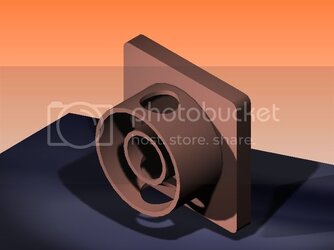
This is what we started with
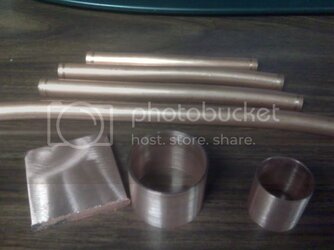
Brazing
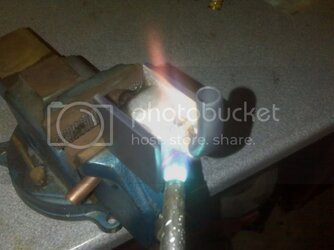
After Brazing
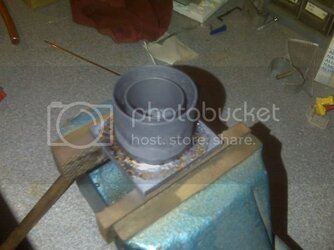
Finished
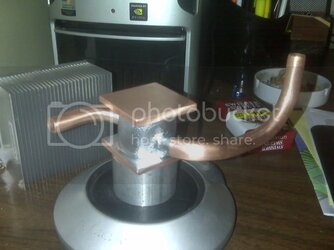
Pressure test
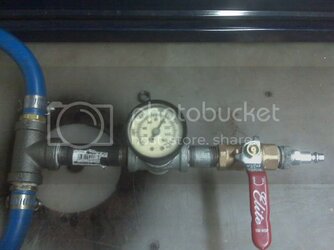
Test picture
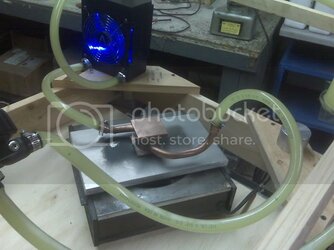
Temp of surface plate
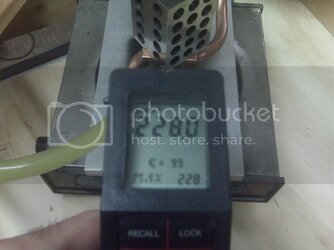
Temp of liquid only reached 98 degrees while sitting on a 228 degree surface temp.
This is the first prototype cpu water block that's going on my board (DFI lanparty in sig).
Normal cpu water blocks don't exceed 3/8 copper. Our block is 2" x 1 1/2" x 1/4" with 1 1/2" diameter by 3/4" with 3/4" chamber with 2" x 2" x 1/4" face plate and 1/2" copper pipe. This allows for zero water constriction. The way the pipes are designed it's self purging of air bubbles. The block weights in a0.8 LBS.
Cadman's currently designing and making a water block for my south bridge.
More pic's and info coming soon to other projects were working on.

